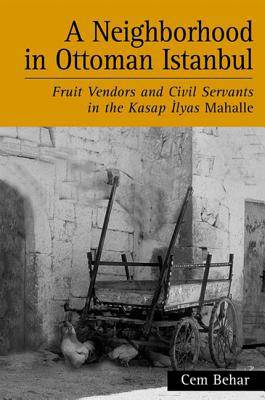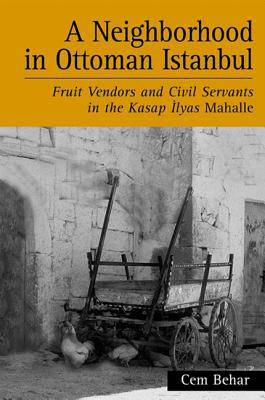
- Afhalen na 1 uur in een winkel met voorraad
- Gratis thuislevering in België vanaf € 30
- Ruim aanbod met 7 miljoen producten
- Afhalen na 1 uur in een winkel met voorraad
- Gratis thuislevering in België vanaf € 30
- Ruim aanbod met 7 miljoen producten
Zoeken
A Neighborhood in Ottoman Istanbul
Fruit Vendors and Civil Servants in the Kasap İlyas Mahalle
Cem Behar
€ 151,45
+ 302 punten
Uitvoering
Omschrijving
Combining the vivid and colorful detail of a micro-history with a wider historical perspective, this groundbreaking study looks at the urban and social history of a small neighborhood community (a mahalle) of Ottoman Istanbul, the Kasap İlyas. Drawing on exceptionally rich historical documentation starting in the early sixteenth century, Cem Behar focuses on how the Kasap İlyas mahalle came to mirror some of the overarching issues of the capital city of the Ottoman Empire. Also considered are other issues central to the historiography of cities, such as rural migration and urban integration of migrants, including avenues for professional integration and the solidarity networks migrants formed, and the role of historical guilds and non-guild labor, the ancestor of the "informal" or "marginal" sector found today in less developed countries.
Specificaties
Betrokkenen
- Auteur(s):
- Uitgeverij:
Inhoud
- Aantal bladzijden:
- 236
- Taal:
- Engels
- Reeks:
Eigenschappen
- Productcode (EAN):
- 9780791456811
- Verschijningsdatum:
- 1/03/2003
- Uitvoering:
- Hardcover
- Formaat:
- Genaaid
- Afmetingen:
- 152 mm x 229 mm
- Gewicht:
- 226 g

Alleen bij Standaard Boekhandel
+ 302 punten op je klantenkaart van Standaard Boekhandel
Beoordelingen
We publiceren alleen reviews die voldoen aan de voorwaarden voor reviews. Bekijk onze voorwaarden voor reviews.











